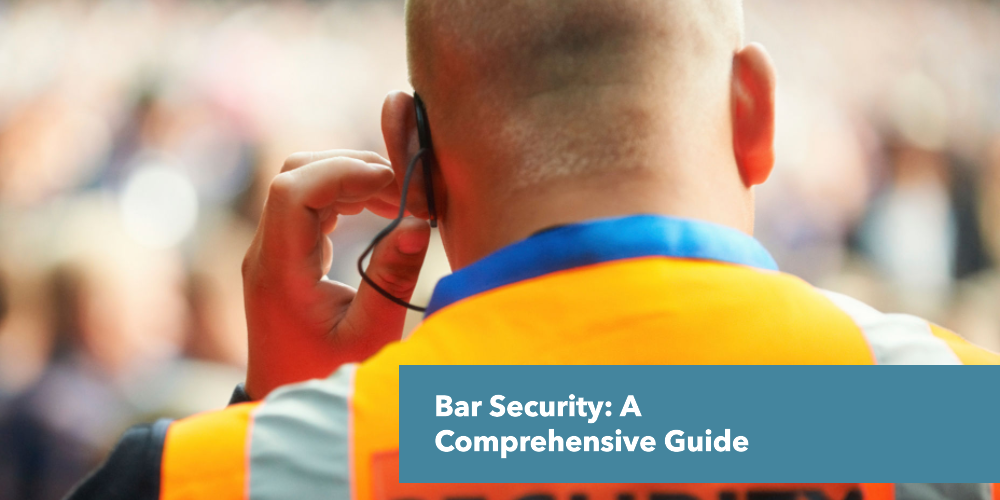What is a Bar Security?
Bar security refers to the practices and personnel employed to maintain safety, prevent conflicts, and enforce rules in bars, pubs, or nightclubs. It ensures patrons and staff are protected from risks like violence, theft, or over-intoxication.
Key Components Explained:
Security Staff (Bouncers/Doormen):
You’ll see them checking IDs, managing entry, and removing disruptive individuals. In the UK, many require an SIA license (cost: £220–£500) and conflict-resolution training.
Surveillance Systems:
Bars use CCTV cameras (90% of UK venues) to monitor crowds and deter illegal activity.
ID and Age Verification:
Strict checks prevent underage drinking. Fines for violations can exceed $10,000 in the U.S.
Crowd Control:
Limits on capacity (e.g., 1 staff per 50 patrons) reduce overcrowding risks.
Emergency Protocols:
Staff train to handle medical crises (e.g., overdoses) and evacuations. Many learn first aid (average training: 4–8 hours).
Why Do Bar Security Need?
Bars need security to prevent risks and ensure a safe environment. Here’s why it’s essential:
Prevent Violence:
Alcohol lowers inhibitions, increasing conflict risks. Security stops fights before they escalate 40% of bars report physical altercations annually.
Enforce Legal Compliance:
You avoid fines (e.g., $10,000+ for underage sales in the U.S.) by ensuring ID checks and alcohol-serving laws are followed.
Protect Staff/Patrons:
Security deters theft, harassment, and assault. 75% of bartenders report verbal abuse, which trained staff can de-escalate.
Manage Emergencies:
From medical crises (e.g., overdoses) to evacuations, security ensures quick response—critical in crowded spaces with 1 exit per 50 people codes.
Control Capacity:
Overcrowding risks fines or closures. Security enforces occupancy limits (e.g., 100 patrons max in 500 sq. ft.).
Protect Reputation:
A single violent incident can deter 70% of customers. Proactive security preserves trust and revenue.
Are Bars Required to Have Security Cameras?
Whether bars must install security cameras depends on local laws. Here’s a breakdown:
Legal Requirements:
UK: No nationwide mandate, but many councils require CCTV in high-risk areas (e.g., late-night venues).
US: Varies by state. For example, New York mandates cameras in establishments with cabaret licenses, while Texas requires them for bars with a TABC permit if they’ve had prior violations.
Insurance/Policy Rules:
Even if not legally required, insurers often demand cameras to reduce liability. 90% of UK pubs use CCTV to comply with insurer terms.
Benefits Beyond Laws:
Deter crime: Cameras cut theft and violence risks by 30–40% in monitored areas.
Evidence: Footage resolves 80% of police investigations faster.
Penalties for Non-Compliance: Fines (e.g., $2,000+ in Texas) or license revocation in regulated areas.
While not universal, cameras are a practical safeguard for safety, liability, and legal protection. Always check your local regulations.
What is the Difference Between Bar Security Guard and Bouncers?
The difference between bar security and bouncers is that a bar security guard oversees overall safety (e.g., surveillance, emergency response), while a bouncer focuses on entry control and physically removing disruptive patrons.
What are the Physical Bar Security Measurements?
Physical security guard measures are strategies and tools used to protect people, property, and assets. Which includes Access Control, Surveillance, Patrols, Screening, Emergency Response and Environmental Design.
Access Control:
You restrict entry using ID checks, keycards, or biometric scanners. For example, 85% of corporate facilities use RFID badges to limit unauthorized access. Learn more about the Access Control Security Guard and get to know more about how Access Control Security Works.
Surveillance:
Security guards monitor CCTV cameras (average coverage: 1 camera per 1,000 sq. ft.) and patrol sites to detect threats.
Patrols:
Regular foot or vehicle patrols (e.g., 4–6 rounds per shift) ensure visibility and deter trespassers or vandalism.
Screening:
Bag checks or metal detectors (used in 60% of high-risk venues) prevent weapons or contraband from entering secured areas.
Emergency Response:
Guards follow protocols (e.g., 5-minute response time for alarms) to handle fires, breaches, or medical crises.
Environmental Design:
Use lighting (minimum 10 lux for visibility), barriers (e.g., bollards), and clear sightlines to reduce blind spots.
These measures reduce theft and incidents by 40–60% in monitored spaces, balancing proactive deterrence with rapid intervention.
Hire Bar Security Services at San Francisco
Make your business more secure with premier security bar guard services in San Francisco. At Hyguard Security Inc., we provide highly trained security officers skilled in enforcing access protocols, overseeing entry points, and addressing any security breaches promptly. Boost your facility’s protection and ensure full compliance with our comprehensive access control solutions. Contact us today or request a quote to discover how we can elevate your security and safeguard your assets.

